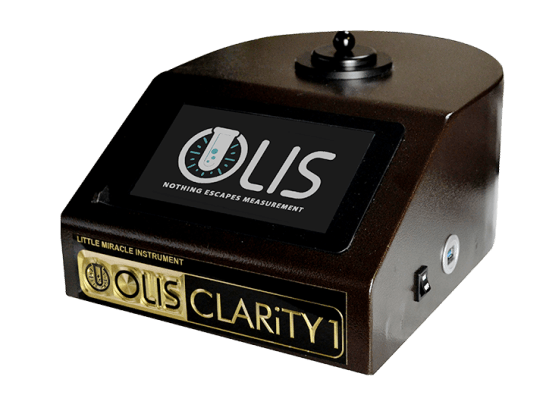More About Spectrophotometers
More About Spectrophotometers
Blog Article
The Ultimate Guide To Spectrophotometers
Table of ContentsUv/vis/nir Fundamentals ExplainedEverything about Uv/visThe Uv/vis/nir Statements7 Easy Facts About Uv/vis DescribedGet This Report on Spectrophotometers

Spectrophotometry is most commonly applied to ultraviolet, noticeable, and infrared radiation, modern-day spectrophotometers can interrogate broad swaths of the electromagnetic spectrum, including x-ray, ultraviolet, noticeable, infrared, and/or microwave wavelengths. Spectrophotometry is a tool that depends upon the quantitative analysis of molecules depending upon just how much light is absorbed by colored substances.
Indicators on Circular Dichroism You Need To Know
A spectrophotometer is frequently utilized for the measurement of transmittance or reflectance of services, transparent or opaque solids, such as refined glass, or gases. Many biochemicals are colored, as in, they soak up visible light and for that reason can be measured by colorimetric procedures, even colorless biochemicals can often be converted to colored substances ideal for chromogenic color-forming reactions to yield substances appropriate for colorimetric analysis.: 65 However, they can likewise be created to determine the diffusivity on any of the noted light ranges that typically cover around 2002500 nm using various controls and calibrations.
An example of an experiment in which spectrophotometry is used is the decision of the balance constant of a service. A certain chemical reaction within a solution might happen in a forward and reverse direction, where reactants form items and products break down into reactants. At some time, this chain reaction will reach a point of balance called an equilibrium point.
Spectrophotometers Fundamentals Explained
The quantity of light that goes through the service is indicative of the concentration of particular chemicals that do not allow light to travel through. The absorption of light is because of the interaction of light with the electronic and vibrational modes of particles. Each type of molecule has a private set of energy levels connected with the makeup of its chemical bonds and nuclei and therefore will take in light of particular wavelengths, or energies, resulting in special spectral residential or commercial properties.
Making use of spectrophotometers spans various clinical fields, such as physics, products science, chemistry, biochemistry. UV/Vis/NIR, chemical engineering, and molecular biology. They are commonly utilized in numerous industries consisting of semiconductors, laser and optical production, printing and forensic evaluation, along with in labs for the study of chemical substances. Spectrophotometry is often used in measurements of enzyme activities, determinations of protein concentrations, determinations of enzymatic kinetic constants, and measurements of ligand binding reactions.: 65 Ultimately, a spectrophotometer is able to identify, depending upon the control or calibration, what substances are present in a target and precisely just how much through estimations of observed wavelengths.
This would come as a service to the previously produced spectrophotometers which were not able to soak up the ultraviolet correctly.
The 7-Second Trick For Circularly Polarized Luminescence
It would be discovered that this did not offer satisfactory results, for that reason in Design B, there was a shift from a glass to a quartz prism which permitted for much better absorbance outcomes - circularly polarized luminescence (https://www.quora.com/profile/Julie-Ann-DeSa-Lorenz). From there, Model C was born with an adjustment to the wavelength resolution which ended up having 3 systems of it produced
It was produced from 1941 to 1976 where the cost for it in 1941 was US$723 (far-UV accessories were an option at extra cost). In the words of Nobel chemistry laureate Bruce Merrifield, it was "most likely the most crucial instrument ever developed towards the advancement of bioscience." Once it became discontinued in 1976, Hewlett-Packard created the first commercially readily available diode-array spectrophotometer in 1979 called the HP 8450A. It irradiates the sample with polychromatic right here light which the sample takes in depending upon its homes. Then it is transferred back by grating the photodiode selection which spots the wavelength area of the spectrum. Considering that then, the creation and application of spectrophotometry devices has actually increased exceptionally and has ended up being one of the most innovative instruments of our time.

Uv/vis/nir Things To Know Before You Buy
The grating can either be movable or repaired.
In such systems, the grating is fixed and the strength of each wavelength of light is measured by a different detector in the variety. When making transmission measurements, the spectrophotometer quantitatively compares the portion of light that passes through a reference service and a test option, then digitally compares the intensities of the 2 signals and computes the percentage of transmission of the sample compared to the referral requirement.

Report this page